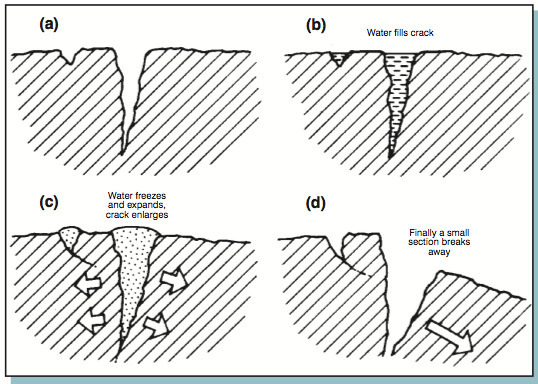This EarthCache will take you to the lovely and very impressive avenue tor of Pil Tor. The Earth Science Lesson of this EarthCache will focus on the secondary phase of weathering of the granite which makes up the many tors of Dartmoor. This is the first in a series of EarthCaches focusing on the weathering of the granite tors.
The geology of Dartmoor is varied and includes granite, mudstone, shales, amongst others. The higher central area of Dartmoor is formed from the Cornubian Batholith, which is a singular massive intrusion that has helped form Dartmoor, as well as Bodmin Moor, Lands End and the Isle of Scilly. This intrusion is made up of granite, which is clearly visible when walking much of Dartmoor. Within this granite core of Dartmoor there is very little other geological bedrock units.
The Cornubian Batholith (a single huge exposure), comprising of granite, was formed some 280 million years ago. Originally this granite was covered mostly by slate and sandstone, which was between 2-3 km thick. These slates and sandstones are relatively soft rocks and in geological timescales they would have been eroded away fairly quickly, leaving granite as the exposed bedrock. Between 60-30 million years ago Dartmoor was experiencing a subtropical climate and was covered with trees and vegetation. As this vegetation rotted the rainwater brought the water, which was made acidic by the plant material, down through the rock and the soil above. This started to erode the upper layers of granite, causing it to be weakened. This meant that around 2 million to 10 000 years ago, during which period Dartmoor was going through an ice age, glacial process such as freeze thaw tore away this relatively loose material, as well as the soils and superficial geologies (geological units found above the bedrock) away leaving the granite outcrops standing proud looking over the surrounding landscape.
The first and most obvious of these, and that can be seen on most (if not all) Dartmoor tors, with some to a greater extent than others is horizontal joints. These were initially formed when the rocks above the granite were eroded away removing the great weight, and therefore pressure was released. This resulted in the granite 'expanding' and these joints were formed. As a result of this release of pressure the joints tend to follow the shape of the surrounding land. Therefore on the tors they are horizontal, where as on valley sides they are inclined.
Most tors on Dartmoor also have a second type of joint, vertical, and these are not caused by the previous processes of erosion that exposed the tors themselves. These were formed by a combination of chemical and physical weathering. The process would have been started by chemical weathering and this is the second stage. This is where acids would have 'attacked' the feldspar crystals, particularly if there were any weaker seams within the granite. After this initial chemical weathering had occurred small cracks, or hollows, would have been left, mostly on the top surface of the granite outcrops. These vertical cracks can be highly informative as to the relative resistance to weathering of the granite. In areas where they are more widely spaced chemical weathering is less effective compared to areas where they are closer together. As the rock is weakened by this chemical weathering the tors and higher areas tend to have wider spacing compared to those in the lower areas.
After these vertical cracks and hollows have been formed by chemical weathering this allows physical weathering, in the form of freeze thaw to occur. This is where water collects in hollows and cracks and then freezes, which means it expands and over time widens the crack until the point when the block can no longer be supported and falls away from the main part of the tor. Many tors on Dartmoor show both blocks that have fallen away from the main body, as well as those that are part way through this process, with a large crack but still attached.

Pil Tor unlike most tors on Dartmoor shows another feature of erosion. Although the bedrock on the area is all granite, this doesn't mean that there isn't variation within the relative resistance to weathering or the rock. Avenue tors form where an area of 'weaker' granite is encased within two seams of stronger bands of granite. The weaker core is eroded out leaving the two bands of granite either side standing proud and creating a natural avenue.
To log this EarthCache go to the posted coordinates and send me a message or email answering these following questions
1) Estimate the average width of the avenue
2) Estimate the height of the exposed rock faces of the tor
3) Look at the surfaces of the rock faces. What types of joints can be seen and what processes have formed them?
4) What is the orientation of the avenue?
5) What evidence around the tor is there that weathering of the exposed granite is still happening?
6) Based on all of the evidence and the description above, if the bands of granite continued on the same orientation of the avenue and you were stood at the posted coordinates. Would you be on a weaker or stronger band and how have you concluded this?